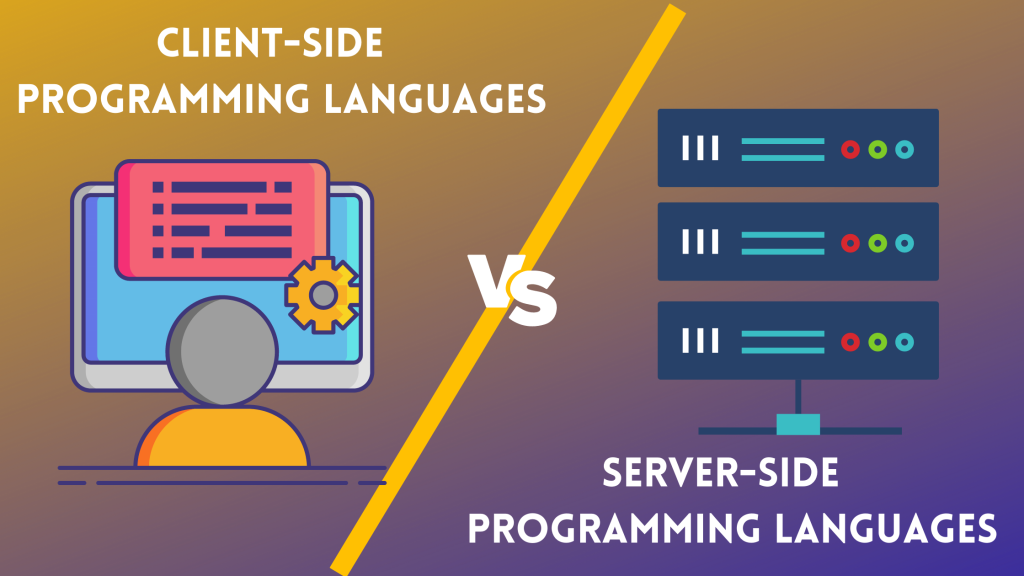Two key concepts in software and web development are client side and server side. There are significant distinctions between the two types of development, including various programming languages and aims. Understanding client-side and server-side development is essential if you work in programming or software development.
The scripts can be created in two different ways: at the client end or at the server end (back end) (server end). The primary distinction between server-side scripting and client-side scripting is that the processing of server-side scripts takes place on a server. On the other hand, client-side scripting does not communicate with the server while processing the client-side scripts. However, it necessitates those browsers execute the scripts on the client computer.
A script is typically a collection of commands that must be carried out by another software or application. The web operates in a client-server environment, as is well known. Client-side scripts run code on the client end, where users can see it, and server-side scripts run on the server end, where users cannot.
If you’re a developer or development company, then you must know the difference between server-side and client-side development. In this article, we’re going to discuss both these topics in detail, as well as the comparison and difference between them.
Table of Contents
ToggleUnderstanding server-side scripting
In basic terms, any scripting or programming that can run on the web server is known as server-side scripting. Server-side scripting is a method of programming for creating the code that can run software on the server side. At the server end, processes including website customization, dynamic content changes, user query answer creation, database access, and so forth are carried out. Using server-side scripting, a client and server can communicate with one another (user). Earlier, CGI (Common Gateway Interface) scripts were used to implement server-side scripting. To run scripts written in programming languages like C++ or Perl on webpages, CGI, etc., was developed.
There are three components that make up the server-side: a server, a database, APIs, and back-end web applications created using a server-side scripting language. The web server processes the script before providing the page to the browser when a browser requests a webpage that uses server-side scripting. Here, processing a script can entail selecting the relevant material to be presented in the client end, performing quick calculations, or retrieving data from a database. The script is executed, and the browser receives the output. The data and source code are more secure since the web server hides the scripts from the user until the content is delivered.
Following the development of CGI, numerous programming languages, including PHP, Python, Ruby, ColdFusion, C#, Java, C++, and others, were created for server-side scripting, some of which are detailed below.
- Java: Java is an object-oriented programming language that programmers can employ for a range of tasks, such as the creation of software and applications. One of the most widely used server-side programming languages is Java.
- Python: Python is a general-purpose, object-oriented programming language that may be used by programmers to create operating systems, web applications, and other things. Data research, finance, computers, and other disciplines all use Python.
- SQL: The industry-standard language for interfacing with databases is SQL, or Structured Query Language. SQL is a database manipulation tool that developers can use to update, retrieve, and delete data from databases.
- PHP: Hypertext Preprocessor, or PHP, is a scripting language used by programmers to build webpages and web applications. In order to show database content on webpages, PHP can connect to databases.
Understanding Client-side Scripting
To create code that can run on the client end (browser) without requiring server-side processing, client-side scripting is used. These scripts are essentially embedded within an HTML text. Prior to submission, the user’s form can be checked for problems using client-side scripting, and the content can be modified based on user input. The client, database, and server are the three components that the web needs in order to work, as we previously stated.
The server burden can be greatly decreased with good client-side scripting. It’s made to function as a scripting language with a web browser acting as the host program. For instance, when a user uses a browser to request a webpage from a server, the HTML and CSS are simply transmitted to the client as plain text, where the browser interprets and displays the web content.
Client-side developers concentrate on building the user-interactive elements of websites. Since it concentrates on the “face” of an application that users can see, client-side development is occasionally also referred to as front-end development. A wide range of jobs are carried out by client-side developers, including: designing web page layouts, user interface design, form validation is added, addition of visual components such as colors and typefaces.
Client-side development is a primary focus for those in professions like web design and user experience design. Developers on the client-side work in particular programming languages. A few popular client-side languages are:
- HTML: Hypertext Markup Language, or HTML, is a markup language that is the industry standard for creating websites. HTML creates the framework of a website and renders it in a browser.
- CSS: Casca ding Style Sheets, or CSS, is a design language that programmers can use to include visual design components into an HTML-coded website. In order to make their websites appear visually appealing on customers’ devices, developers can employ CSS.
- JavaScript: is a scripting language that programmers can use for a variety of tasks, including creating websites and web apps. JavaScript can be used by developers to create dynamic, interactive webpages.
- VBScript: Some browsers support VBScript, a general-purpose client-side scripting language. Website developers can incorporate interactive components using VBScript.
Difference between server-side and client-side development
- At the backend, where the source code is not visible or concealed on the client side, server-side scripting is employed (browser). On the other hand, the front end, which users can see from the browser, uses client-side scripting.
- A server-side script communicates with the server when it is executed. Client-side scripting, in contrast, does not require any server communication.
- HTML, CSS, and JavaScript are among the scripting languages used on the client side. The opposite is true for programming languages like PHP, ASP.NET, Ruby, ColdFusion, Python, C#, Java, C++, etc.
- Using server-side scripting, websites may be dynamically changed and have their web pages customized. On the other hand, the client-side script can efficiently reduce the server’s workload.
- Because server-side scripts are typically concealed from the client end whereas client-side scripts are exposed to users, server-side scripting is more secure than client-side scripting.
Conclusion
Server-side scripting and client-side scripting collaborate in a coordinated fashion. The client-side scripting, on the other hand, places a strong emphasis on improving the usability and aesthetics of the web application or website’s interface. In contrast, server-side scripting places more of an emphasis on techniques for obtaining data, handling errors, quick processing, etc.








